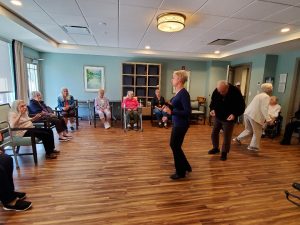I was recently referred to a new client by her financial advisor. The client is only 68 years old. She had suffered a stroke when she was in her late 50s and decided to move to a well-respected Continuing Care Retirement Community when she was still able to perform most activities of daily living. She started out at the independent living level, where she received 3 daily meals and help with housekeeping. Then her health gradually became worse and she moved to assisted living. There she received some hands-on help with her activities of daily living, meaning bathing, dressing, toileting, transferring, and walking. Recently, she suffered another health setback and was asked to move to the skilled area where she would receive complete assistance with all of her activities of daily living.
This relatively young senior’s financial advisor referred the client to ADSLA out of concern that her current community offers only private rooms in its skilled nursing area. The current cost exceeds $500.00 per day and there is no option for a semi-private room. In addition, this community doesn’t accept Medicaid (the federal program which is administered by each state for residents who cannot pay for their long-term care). Although this senior has more than half a million dollars in assets, her financial advisor asked me to investigate other options for her as he wants to make her funds last longer and avoid looking for a Medicaid community when her assets are fully depleted. She has no property or long-term care insurance.
I am going to be frank and say that I am not a fan of the nursing homes in the area where the client is currently living. There are only several good nursing homes in the area, and she is already in one of them. I picked the top four in the area. Two of them are part of Continuing Care Retirement Communities, but their Medicaid beds are reserved for the residents who already live with them. Another community declined the client because of her age and, in their view, her insufficient assets. In addition, none of their beds are certified for Medicaid. We therefore have one option left that is in the vicinity of the client’s current skilled nursing facility. All of the beds are certified for Medicaid, so I am hopeful that she will be offered an opportunity to move there.
 Chicago Senior Living Advisors Blog
Chicago Senior Living Advisors Blog



